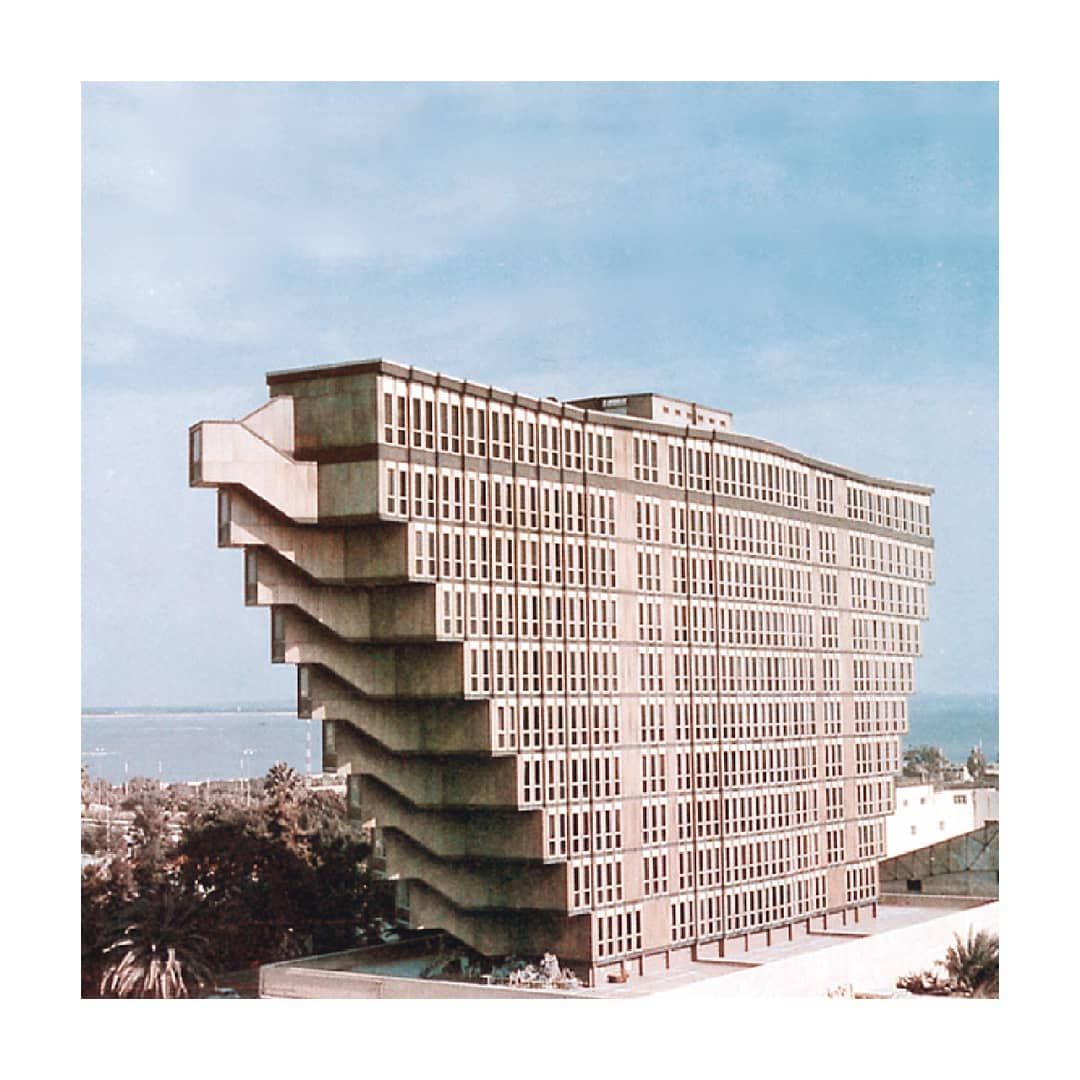Table Of Content

Brutalist buildings are rooted in communal living, which is why the buildings are typically large and harsh. Brutalist buildings were neglected and covered in graffiti, symbolizing urban decay. The embrace of Brutalist architecture in the Soviet Union meant that the style also began to suffer from its association with totalitarianism. Goldfinger was one of the modernist architects called upon to rebuild and restock London’s housing supply after the ravages of World War II, but not everyone is a fan of his work. James Bond author Ian Flemming famously hated Goldfinger’s aesthetic so much that he named Bond’s nemesis after him. This Brutalist model for communal interaction was widely employed in British public housing in the following decades, notably in Ernö Goldfinger's Balfron Tower ( ) and Trellick Tower ( ) in East London.
History of Brutalist Architecture
“The style is characterized by raw, exposed concrete and bold geometric forms,” Mark Bittoni, principal of Bittoni Architects says. “You’ve certainly seen it before in many cultural and civic buildings built between the 1950s and ’70s.” With countless examples spanning countries and continents, the look has both historical significance and remains popular—particularly in residential design—today. In this guide from AD, discover the history and impact of Brutalism, study the controversial reactions to the look, and visit famous Brutalist buildings around the world. The brutalist style of design — a type of architecture that emerged post-war that, above all, embraced the brutal honesty of raw materials such as concrete slabs, steel, and glass.
Concepts and Styles
“Brutalist design is striking and statement-making—it can be the perfect addition if you are wanting a dose of drama,” says designer Nadia Watts. You don’t need a Brutalist home to capture the style (though it certainly helps). “Brutalist interior design typically followed the same tenets as Brutalist architecture but often scaled down and adapted for interior use,” says Reggev. If you like the look and authenticity behind Brutalist architecture, these tips can help you bring the aesthetic into your own home.
The Origins of Brutalism

A pioneer of modern architecture, Charles-Édouard Jeanneret, known as Le Corbusier, was not only the main predecessor of and influence upon Brutalism, but also created some of its most iconic structures. He first considered the use of concrete as a student with Auguste Perret in Paris, then in 1914 he studied the technology of reinforced concrete with the engineer Max Dubois. The idea was, as he described it, "a juxtaposable system of construction according to an infinite number of combinations of plans." One of the most common materials used in brutalist architecture or interior design is concrete—usually unpolished. In addition to the materials, you’ll find lots of odd geometrical shapes. With the modern evolution of Brutalism, the design style has since branched out to other areas, apart from its original focus on architecture.
High contrast is used to communicate important information at a glance and convey a sense of raw energy. Interestingly, it's possible to achieve this goal using only one color, which is why many brutalist websites experiment with monochromatic color schemes. In this article, we’ll discuss what brutalism is (web brutalism, in particular) and share examples of how websites have embraced this web design trend. As for the types of homes that are best suited to Brutalist design, look to midcentury modern and contemporary styles. "Too recent to be described as post-war, this Polish church can rather be considered post-soviet. Church construction during the Russian occupation of Warsaw was almost entirely banned, influencing the flourishing of sacred architecture that followed independence. "Germany's post-war churches are often brutal and austere. Their designs reflect a rejection of the opulence and pride of the pre-war period and serve as a place of sanctuary and reflection.

Whether brutalism is as scary as it sounds ultimately depends on who you ask. But at the end of the day, you’d be hard pressed to ignore a design style that has attracted such ire and fascination throughout the decades. Brutalism rose from the ashes of war, gave shelter to the bereft, and 70 years later, its monuments are still standing. Such a powerful style is worth the risk to try out on your design projects every now and then.
Lots of Concrete- clou
"Symbols of industrial architecture, such as the rounded ovens, represent the Ruhr region's manufacturing heritage and of the furnaces that reside at the base of humanity." "Here the concept of incarnation is integrated through the abstraction of organic forms and geometry as a sacred message. The omnipresent roof structure serves as a conduit, forging a connection between the celestial and physical realms. "Stripped of their symbology and place in time, they are spaces to forget the horrors of history, war and shame and focus on the hope and light of the future." "They eschewed nostalgic replication, resulting in spaces that excluded functional areas and symbols prevalent since medieval times, retaining only the essential elements of the altar, cross, and font." The churches in Sacred Modernity have sculptural concrete forms that break away from the mould of conventional churches, which typically have a floor plan in the shape of a cross.
Barbican Estate in London (Chamberlin Powell & Bon)
A central desire for honesty resulted in leaving structural materials like concrete exposed and unadorned. But it also manifested a preference for bringing in natural and authentic elements, rather than materials representing something they're not (Reggev uses faux wood painting as an example). Concrete’s liquidity made it highly moldable, allowing building designs to utilize blocky, angular, rounded, and curved shapes, thus making geometry another big piece of the brutalist formula. The brutalist approach has less to do with austerity and more to do with celebrating the few design elements that are present. For example, many brutalist buildings use raw concrete in over-the-top arrangements that would make a minimalist shudder.
Collcoll hides stairs and seats in pixellated wooden structure at Pricefx office
Buildings of this kind are often big, bold, and made mostly from concrete. The sky bridges appear to catch the sky itself within the building’s lateral and vertical grid since they are defined against the empty distance between two primary components. The gap created by the separation of the two parts will undoubtedly be remembered as Goldfinger’s true accomplishment and a tremendous architectural legacy.
DC’s brutalist buildings tell a half-hidden history - Greater Greater Washington
DC’s brutalist buildings tell a half-hidden history.
Posted: Wed, 14 Feb 2024 08:00:00 GMT [source]
But before brutalism evolved into the variety of styles it’s matured into today, its bleak exterior had a purpose. As with so many home design terms, Brutalism comes from a French phrase that means raw or unfinished concrete—and many cite Charles-Édouard Jeanneret, known as Le Corbusier, as the godfather of this look. The French-Swiss architect was known for the bare concrete columns that often appeared in the apartment houses he designed. McGregor Smith also described that modernist and brutalist churches exhibited a move away from traditional forms of religious symbolism in decorative elements, and instead used the material and shape of the building to recall the same feelings. “There is a purity and simplicity to it,” King says of brutalism’s design tenets.
AT UNT, brutalist architecture remade with a soft touch - The Dallas Morning News
AT UNT, brutalist architecture remade with a soft touch.
Posted: Wed, 01 Nov 2023 07:00:00 GMT [source]
While Brutalist homes may not seem quite as striking as their colossal counterparts, their designs are often just as evocative of the historic architectural style. Brutalism, defined by a steadfast employment of angular shapes and raw materials such as concrete, can provide a simple yet unique backdrop for daily life. From interiors decorated with similarly rugged furnishings to those filled with contrasting curvy fixtures, we’ve gathered four stunning Brutalist homes featured by AD. Brutalist interior design divides opinion, and it’s certainly not a style for those who want to decorate with maximalism. And its typical features can be introduced by incorporating industrial materials in furniture and lighting, opting for neutral palettes, and creating open layouts. For a softer element, houseplants are not out of place, and ensuring you bring in wood will up the quotient of natural materials.
Today, the structure is famously recognized as an icon symbol of Brutalist architectural design. Originally, the Brutalist movement emerged in the mid-20th century, roughly around the late 1950s after World War II. Its purpose was to create buildings that were honest, functional, and expressive of their materials.

No comments:
Post a Comment